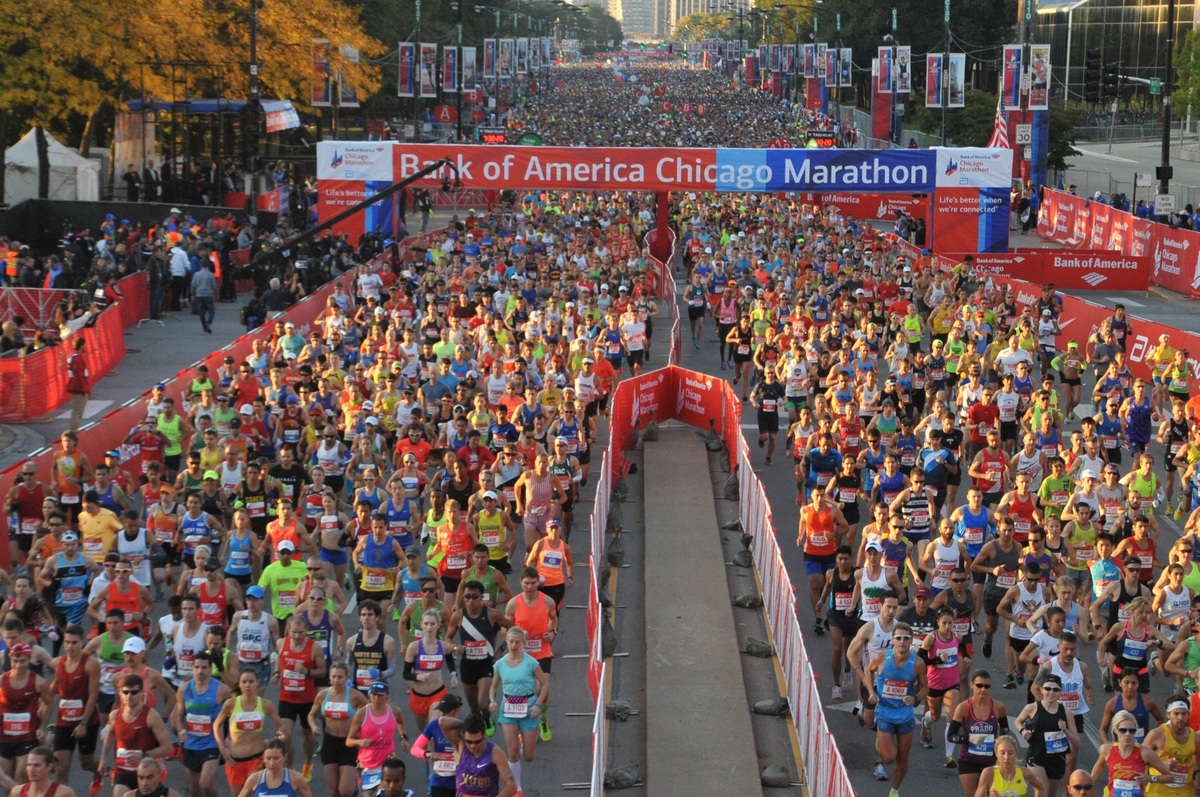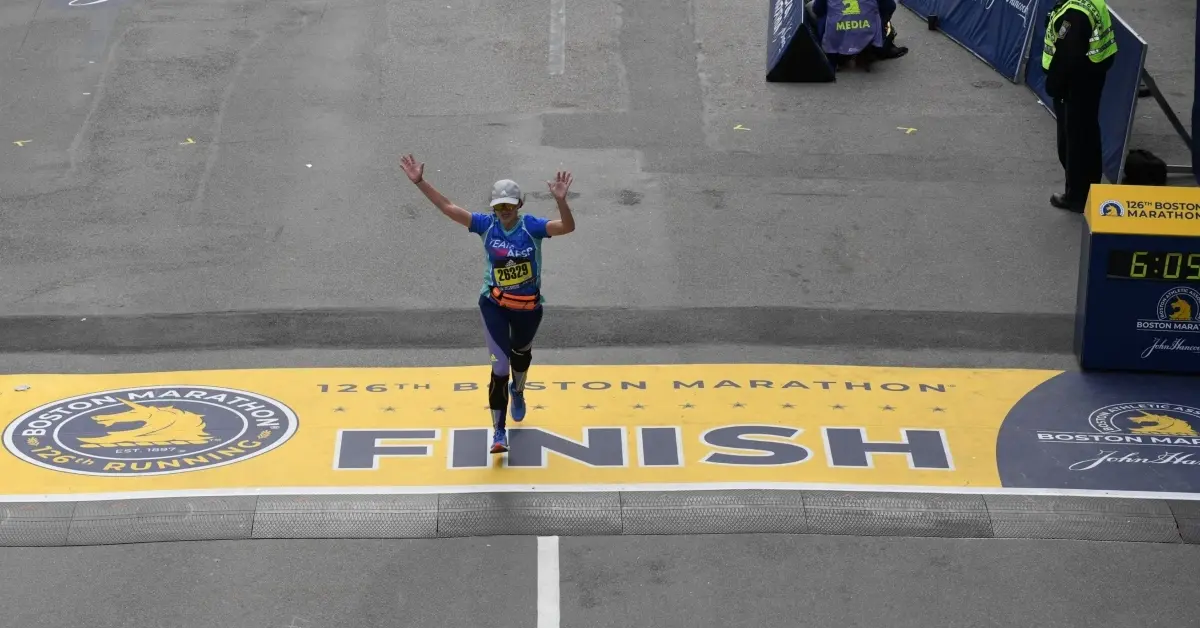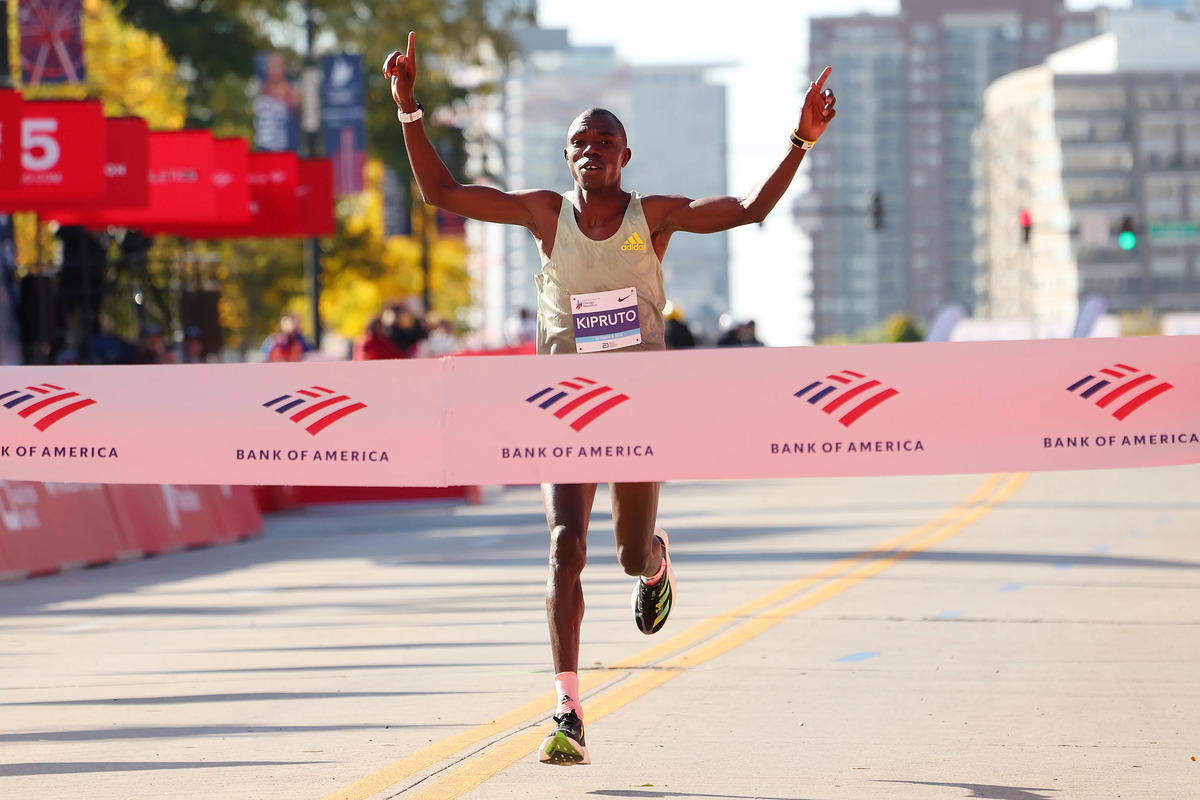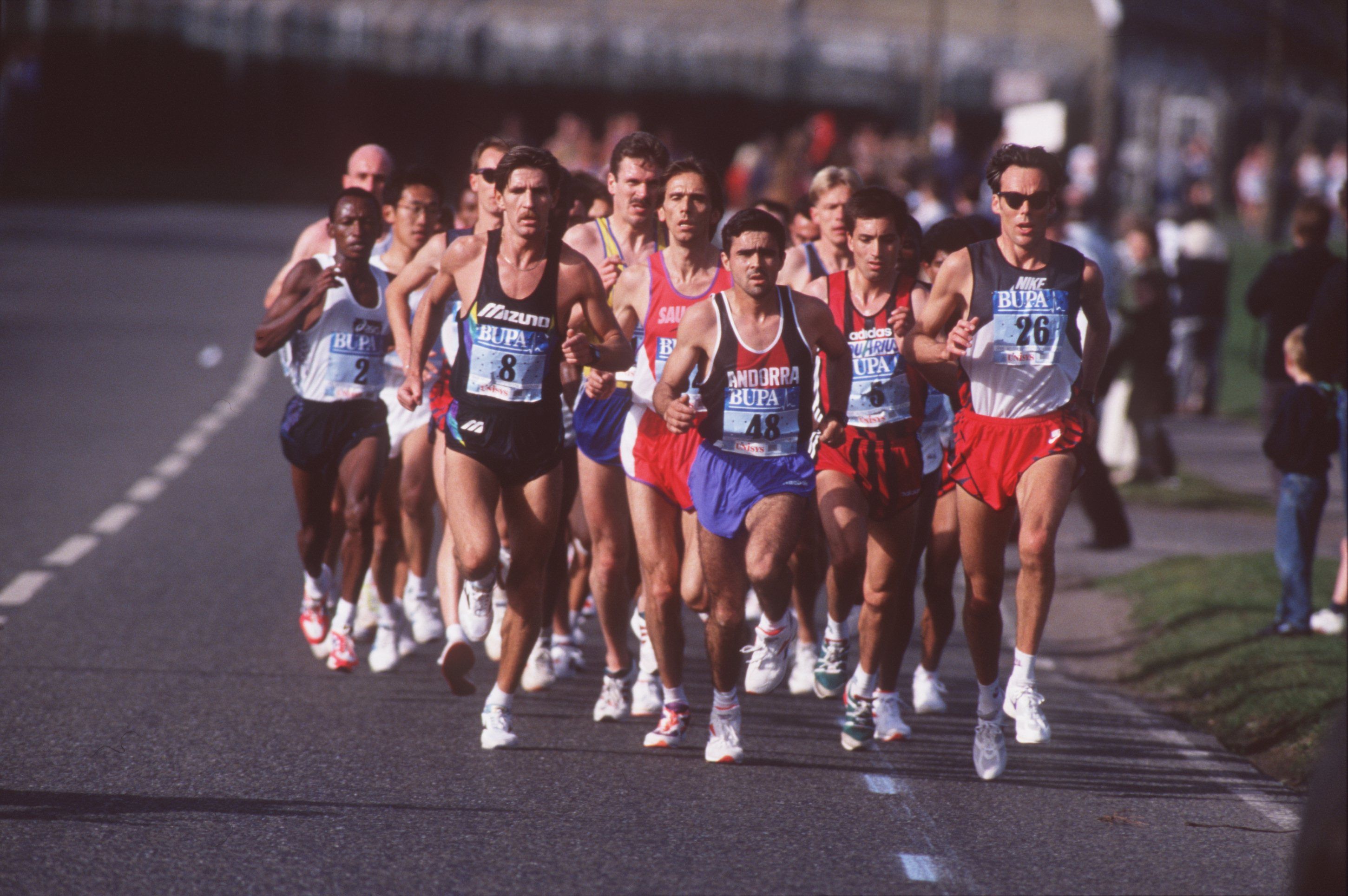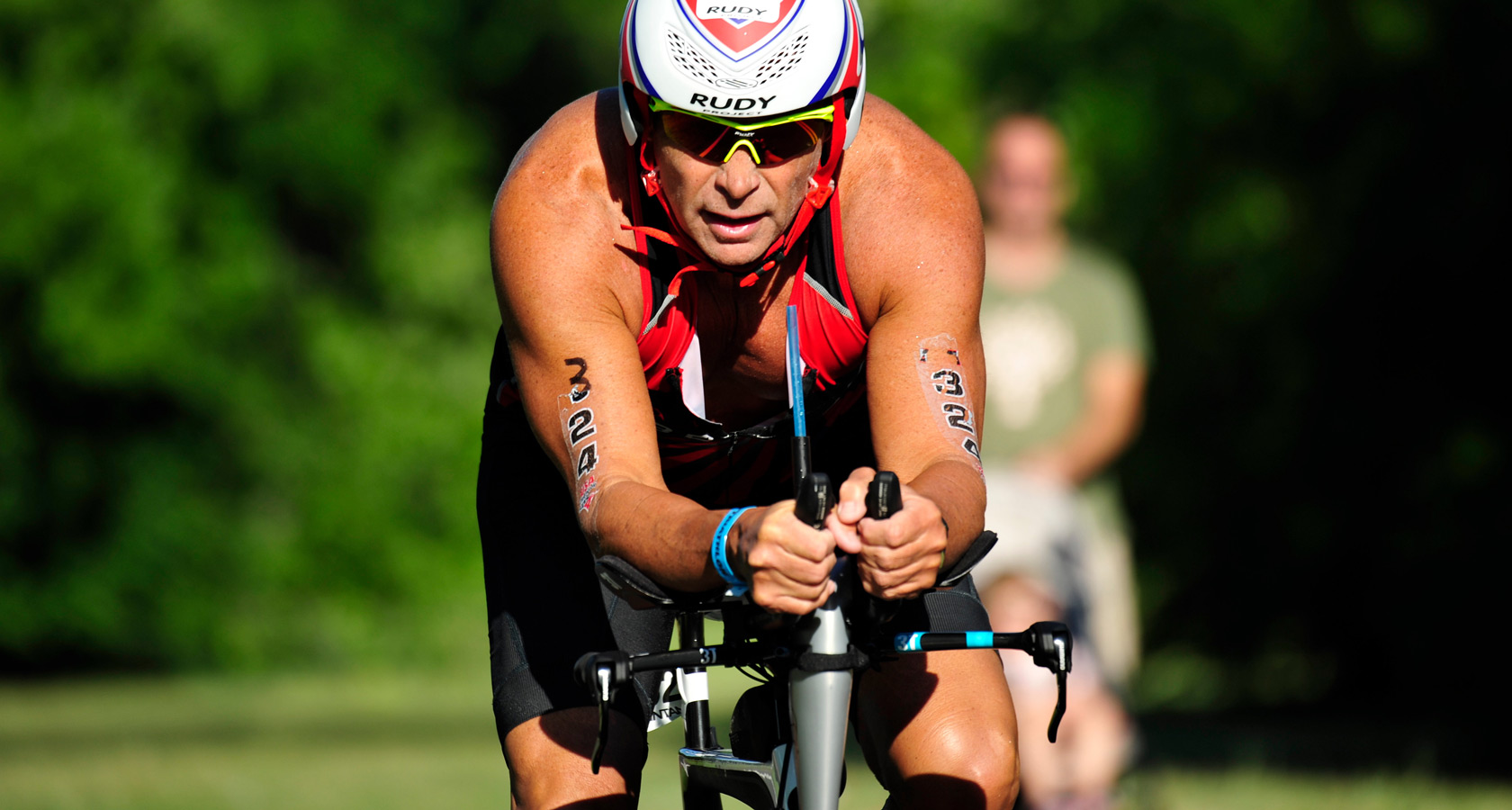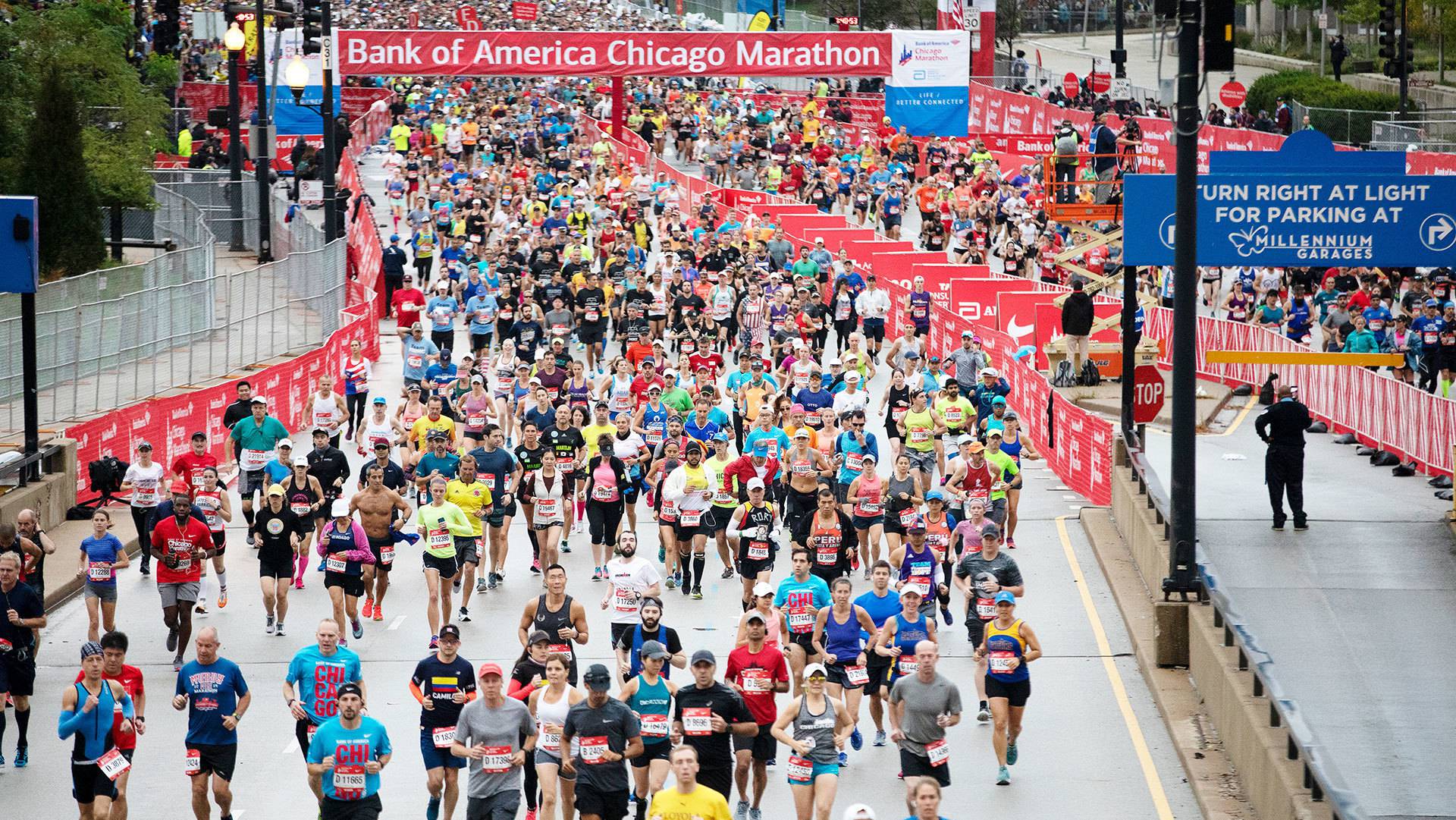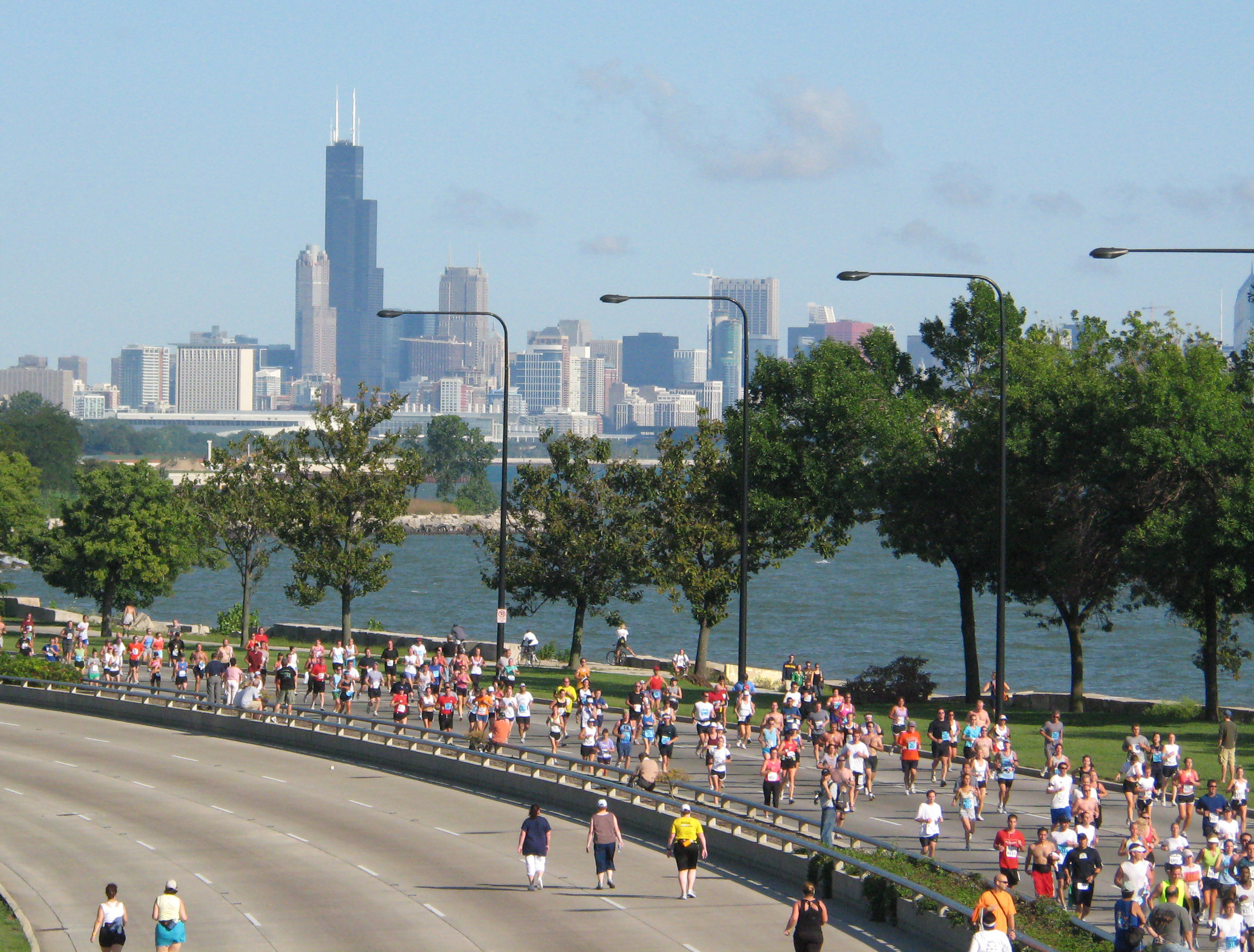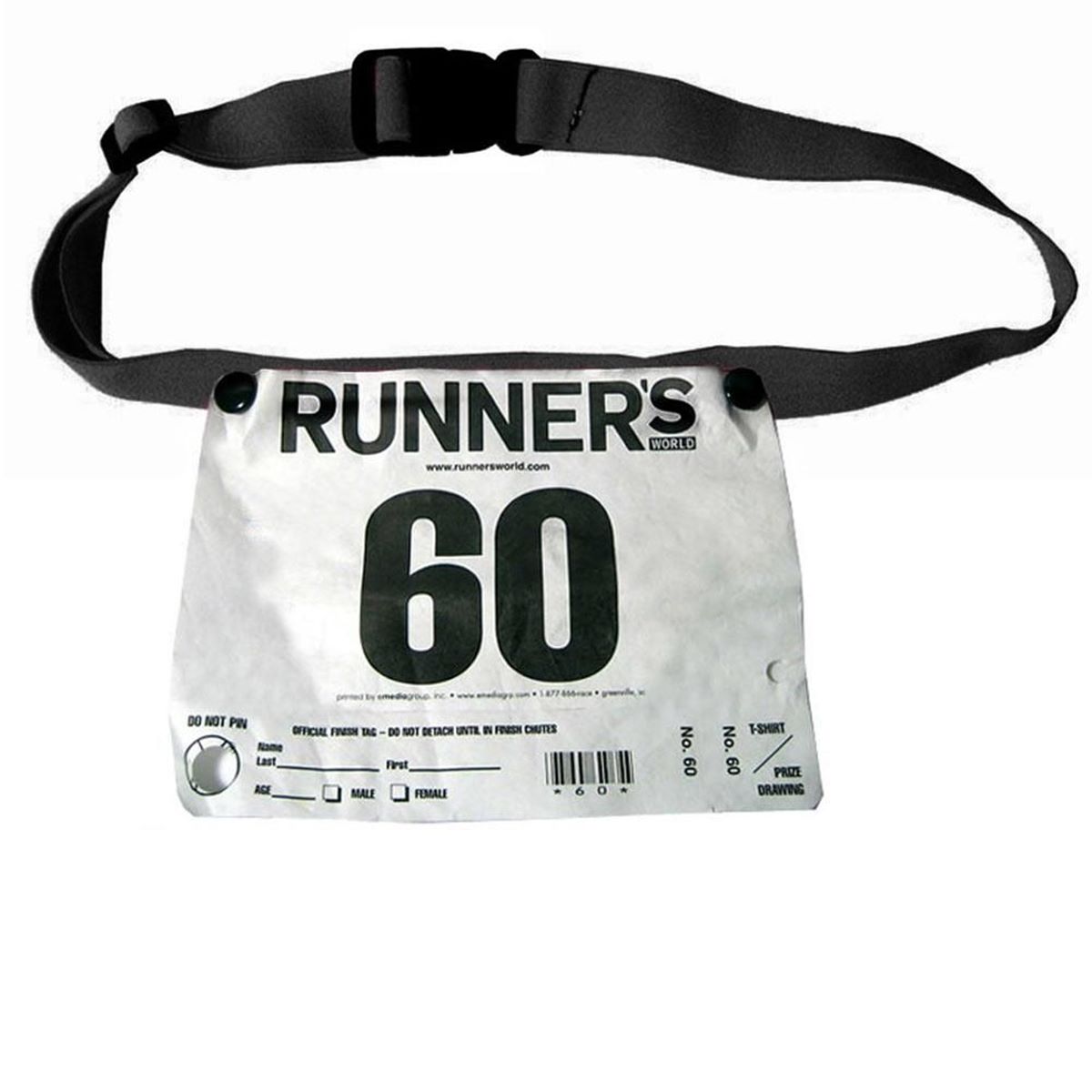Home>Misc>Featured>What Does Shortened Mean In Chicago Triathlon


Featured
What Does Shortened Mean In Chicago Triathlon
Modified: January 2, 2024
Discover the meaning of "shortened" in the Chicago Triathlon and get featured in this exciting event. Register now and experience the thrills of a shortened course.
Introduction
Welcome to the world of triathlons, where athletes push their physical and mental limits to complete a challenging combination of swimming, cycling, and running. While triathlons are typically known for their standard distances, such as the Olympic distance (0.93-mile swim, 24.85-mile bike, 6.2-mile run) or the Ironman distance (2.4-mile swim, 112-mile bike, 26.2-mile run), there are also options for those who prefer a shorter challenge.
In this article, we will explore the concept of the shortened distance in the context of the Chicago Triathlon, one of the most popular and exciting triathlon events in the world. We will delve into the reasons why participants may choose the shortened option, the training involved, and the benefits and drawbacks of participating in a shorter triathlon.
If you’ve ever wondered if the shortened distance is right for you, or if you want to gain a deeper understanding of the Chicago Triathlon, you’ve come to the right place. Let’s dive into the world of triathlons and discover the appeal of the shortened option.
The Chicago Triathlon: An Overview
The Chicago Triathlon is an annual event that attracts athletes from all over the world to experience the thrill of competing in the heart of the Windy City. With its stunning backdrop of the Chicago skyline and the picturesque Lake Michigan, this triathlon offers participants an unforgettable race experience.
As one of the largest triathlons in the United States, the Chicago Triathlon offers various race distances to cater to athletes of all abilities. The traditional race distances include the SuperSprint (0.25-mile swim, 6.2-mile bike, 1.5-mile run), the Sprint (0.47-mile swim, 15.16-mile bike, 3.1-mile run), and the Olympic (0.93-mile swim, 24.85-mile bike, 6.2-mile run). These distances provide a comprehensive test of endurance, speed, and stamina.
However, for those who may not be ready to take on the full challenge, the Chicago Triathlon also offers a shortened distance option. The shortened distance typically consists of a smaller swim, bike, and run course, allowing participants to enjoy the race at a more manageable level.
With its convenient location in downtown Chicago and the exceptional organization of the event, the Chicago Triathlon has become a favorite among both seasoned triathletes and beginners. The race atmosphere is electric, as participants tackle the course with determination and the support of thousands of cheering spectators.
For many athletes, the Chicago Triathlon is a dream come true, offering not only a chance to test their physical limits but also an opportunity to soak in the vibrant energy of the city. Whether it’s the skyline views during the bike leg or the invigorating swim in Lake Michigan, the Chicago Triathlon provides a truly memorable experience for all participants.
Understanding the Shortened Option
The shortened option in the Chicago Triathlon is designed to provide an alternative for participants who may prefer a less demanding race experience. It allows athletes to still be part of this prestigious event while choosing a distance that aligns with their current fitness level, goals, or personal circumstances.
The exact specifications of the shortened option may vary from year to year, depending on race organizers and course logistics. However, it typically involves a reduction in the swim, bike, and run distances compared to the standard race distances. For example, the swim may be shortened to 0.2 miles, the bike to 10 miles, and the run to 2 miles.
This shortened distance can be a great choice for individuals who are new to triathlons and want to ease into the sport without overwhelming themselves. It also appeals to those who may be recovering from an injury or coming back from a fitness hiatus. By opting for the shortened option, participants can build confidence, gain race experience, and gradually progress to longer distances in future events.
Moreover, the shortened option is not limited to beginners or those with physical limitations. Even experienced triathletes may choose this option if they are seeking a more relaxed and enjoyable race experience without the pressure of chasing personal records or competing at their highest intensity. The shortened distance can be seen as a chance to focus on the joy of participating in a triathlon rather than solely on achieving a specific performance goal.
It’s important to note that the shortened option still requires dedicated training and preparation. While the distances may be shorter, the race intensity and the need to maintain a consistent pace throughout each leg of the race remain. Proper swim, bike, and run training, as well as a solid foundation of cardiovascular fitness, are essential for successfully completing the shortened triathlon.
Next, we will explore the reasons why participants may choose the shortened option in the Chicago Triathlon.
Reasons for Choosing the Shortened Option
There are several reasons why participants of the Chicago Triathlon may opt for the shortened option. Understanding these reasons can provide insight into the diverse motivations that drive athletes to choose this alternative distance.
1. Building Confidence: For beginners or those new to the sport of triathlon, the shortened option provides an opportunity to build confidence and gradually ease into the challenges of multi-sport racing. By completing a shorter distance at the Chicago Triathlon, participants can gain valuable race experience and develop the necessary skills and mental resilience to tackle longer distances in the future.
2. Time Constraints: Some individuals may have time constraints due to work, family, or other commitments. The shortened option allows them to participate in the Chicago Triathlon without dedicating as much training time to the longer distances. It provides a more manageable race experience that fits into their busy schedules.
3. Injury Recovery: Athletes who are recovering from an injury or returning to triathlons after a period of physical rehabilitation may choose the shortened option to minimize the strain on their bodies. It allows them to gradually reintroduce the demands of swim, bike, and run training while reducing the risk of exacerbating their injury.
4. Mental or Emotional Factors: Triathlons can be mentally and emotionally challenging, requiring a high level of commitment and perseverance. Some participants may choose the shortened option to alleviate the pressure and enjoy a more relaxed race experience. It can provide an opportunity to focus on the joy of participating rather than solely on achieving performance goals.
5. Variety and Exploration: Even experienced triathletes who have completed longer distances may choose the shortened option to mix up their race experiences. It offers a different type of challenge and allows them to explore different facets of their fitness and abilities. It can be a refreshing change of pace from the rigorous training and demands of longer distance triathlons.
It’s important to remember that regardless of the reasons for choosing the shortened option, all participants still put in dedicated effort and preparation for the Chicago Triathlon. The decision to participate in a shorter distance does not diminish the achievements of these athletes. It’s about tailoring the race experience to align with personal goals, circumstances, and individual preferences.
Training for a Shortened Distance
Training for a shortened distance in the Chicago Triathlon requires a focused and structured approach to ensure that participants are adequately prepared for the race. While the distances may be shorter, it is important to remember that the intensity and demands of the race remain.
The training plan for a shortened distance triathlon should encompass the three disciplines of swimming, cycling, and running, as well as incorporate strength training and recovery. Here are some key considerations when training for a shortened distance:
1. Establish a Training Schedule: Developing a consistent training routine is crucial in building endurance and improving performance. Determine the number of training days per week, allocate specific days for each discipline, and include rest or active recovery days to prevent overtraining and reduce the risk of injury.
2. Balance the Three Disciplines: Divide your training time evenly among swimming, cycling, and running. Allocate specific days for each discipline and gradually increase the duration and intensity of your workouts. Focus on improving your technique, endurance, and speed in each discipline.
3. Include Brick Workouts: Brick workouts, which involve combining two disciplines back-to-back, are essential for simulating the feeling of transitioning from one sport to another. Incorporate swim-to-bike and bike-to-run sessions into your training plan to adapt your body to the unique challenges of a triathlon.
4. Strength Training: Incorporate strength training exercises to improve overall muscular strength, stability, and resilience. Focus on core exercises, lower body exercises (such as squats and lunges), and upper body exercises (such as push-ups and pull-ups). This will help enhance your performance and reduce the risk of injury.
5. Practice Transitions: The transitions between each leg of the race are crucial in minimizing time and maintaining momentum. Set aside specific training sessions to practice transitioning smoothly from the swim to the bike, and from the bike to the run. This will help you become more efficient and confident during the actual race.
6. Recovery and Rest: Adequate rest and recovery are just as important as training itself. Listen to your body, prioritize rest days, and give yourself time to recover and rejuvenate. Incorporate techniques such as stretching, foam rolling, and massage to alleviate muscle soreness and enhance recovery.
Remember, even though the distances in a shortened triathlon are shorter, it does not mean that the training can be taken lightly. Consistency, dedication, and a thoughtful training plan are essential for a successful race day.
Benefits and Drawbacks of Participating in the Shortened Triathlon
Participating in a shortened triathlon in the Chicago Triathlon comes with its own set of benefits and drawbacks. Understanding these can help individuals make an informed decision about whether the shortened option is the right choice for them.
Benefits:
1. Accessible for Beginners: The shortened distance provides a more achievable goal for individuals who are new to triathlons or have limited experience in multi-sport events. It allows them to participate in a prestigious race like the Chicago Triathlon without feeling overwhelmed or intimidated by the longer distances.
2. Opportunity for Progression: The shortened triathlon is a stepping stone for athletes looking to gradually progress to longer distances. It provides an opportunity to build confidence, gain race experience, and develop the necessary skills and fitness before taking on more challenging races in the future.
3. Time Efficiency: Completing a shortened triathlon requires less time commitment compared to the standard race distances. This makes it a suitable option for individuals with busy schedules, or those balancing work, family, and other commitments.
4. Enjoyment and Relaxation: Participating in a shortened triathlon allows athletes to enjoy the race experience without the added pressure of pushing themselves to the limits. It can be an opportunity to soak in the atmosphere, appreciate the surroundings, and have a more relaxed and enjoyable race day.
Drawbacks:
1. Desire for Greater Challenge: Some individuals may feel that the shortened triathlon does not provide them with a sufficient challenge, especially if they have experience in longer distances. They may prefer to push their limits and test their endurance by participating in the full standard distance races.
2. Hierarchy of Achievement: In some cases, completing a shortened triathlon may not be seen as an accomplishment on the same level as finishing a longer distance race. There can be a perceived hierarchy in the triathlon community, with longer distances holding more prestige. However, it is important to remember that every athlete’s journey and goals are unique.
3. Progression Limitations: While the shortened distance allows for a gradual progression, some athletes may feel limited in their growth and development as triathletes. They may reach a point where they desire to move beyond the shortened distance and pursue more challenging races to continue their personal growth and improvement.
Ultimately, the decision to participate in a shortened triathlon should align with an individual’s goals, abilities, and preferences. Whether it’s to ease into the sport, balance time commitments, or simply enjoy a more relaxed experience, the shortened option provides a valuable opportunity for athletes of all backgrounds and ambitions.
Key Considerations for Participants Opting for the Shortened Distance
For participants who choose the shortened distance option in the Chicago Triathlon, there are several key considerations to keep in mind to ensure a successful and enjoyable race experience. These considerations will help athletes make the most of their training and race day preparations.
1. Set Clear Goals: Define your goals for the race, whether it’s simply completing the triathlon, achieving a specific time, or using it as a stepping stone to longer distances. Having clear goals will provide focus and motivation throughout your training and help you stay committed to your race day objectives.
2. Training Specificity: Modify your training to align with the shorter distance. Focus on building speed and intensity in your workouts to match the demands of the race. Incorporate interval training and tempo runs to improve your pace and ramp up your fitness for a faster performance.
3. Transition Practice: In a shortened triathlon, efficient transitions can make a significant difference in your overall race time. Practice your transitions regularly to become comfortable and efficient in switching from one discipline to another. Set up mock transition areas during your training sessions to simulate the race day experience.
4. Course Familiarity: Take the time to familiarize yourself with the race course, even if it’s a shortened distance. Study the swim, bike, and run routes, paying attention to any important landmarks, turns, or challenging sections. This knowledge will boost your confidence and allow you to plan your race strategy more effectively.
5. Nutrition and Hydration: Proper nutrition and hydration are vital for race day performance. Even though the distance is shorter, fueling your body adequately before, during, and after the race is essential. Develop a nutrition plan that suits your needs and practice it during your training to ensure optimal performance on race day.
6. Stay Mentally Strong: Challenge yourself mentally during training by pushing through difficult workouts and overcoming any doubts or negative thoughts. Mental resilience is just as important as physical fitness in a triathlon. Use positive affirmations, visualization techniques, and mental strategies to stay focused, motivated, and confident during the race.
7. Enjoy the Experience: Embrace the race day atmosphere, soak in the energy of the event, and celebrate your accomplishment. Participating in a triathlon, regardless of the distance, is a remarkable achievement. Enjoy the journey, appreciate the support of fellow participants and spectators, and savor every moment of the race.
By considering these key factors, participants who choose the shortened distance option in the Chicago Triathlon can maximize their performance, enjoyment, and overall race day experience.
Conclusion
The Chicago Triathlon offers participants the opportunity to challenge themselves and embrace the thrill of multi-sport racing in one of the most iconic cities in the world. For some athletes, the traditional race distances may seem daunting, but the option to participate in a shortened triathlon provides a gateway to the triathlon world.
Whether you are a beginner looking to dip your toes into the world of triathlons, an experienced athlete seeking a more relaxed race experience, or someone dealing with time constraints or injury recovery, the shortened distance in the Chicago Triathlon offers a viable and fulfilling option.
By understanding the benefits, drawbacks, and key considerations of participating in the shortened triathlon, you can make an informed decision that aligns with your goals, abilities, and circumstances. Gradual progression, building confidence, and enjoying the race day experience are just a few of the rewards that come with choosing the shortened option.
Remember, the Chicago Triathlon, in any distance, is a celebration of human resilience, determination, and the pursuit of personal accomplishment. The journey towards race day is filled with dedication, training, and growth.
So whether you choose the full standard distance or the shorter alternative, engage in focused training, embrace the race day atmosphere, and celebrate your achievements. The Chicago Triathlon awaits, ready to provide an unforgettable experience where you can push your limits, inspire others, and create lifelong memories.
